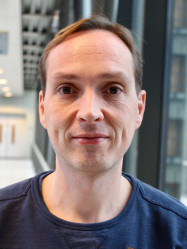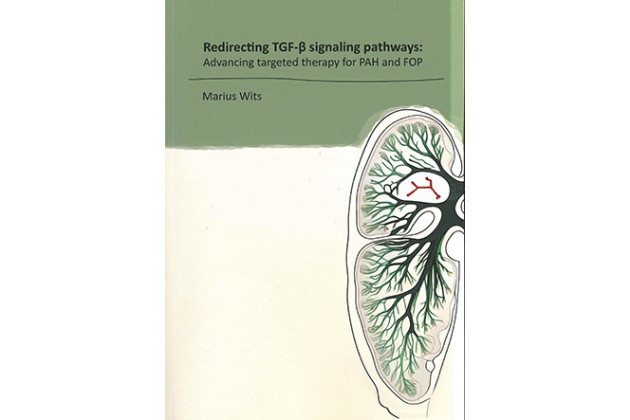LENTIVIRUS PRODUCTION
The Viral Vector Facility can produce batches of lentivirus for your research.
Please provide (at least) 13.7µg of plasmid containing your gene of interest (compatible with 3rd generation packaging system).
Titers of all batches are determined by p24 ELISA.
- The Viral Vector Facility uses third generation lentiviral vectors.
- The viruses are produced on 293T cells by co-transfection of three packaging vectors (pCMV-VSVG, pMDLg-RRE and pRSV-REV) and a fourth plasmid containing gene of interest.
- Virus containing medium is collected on both 48h and 72h post transfection and filtrated by low-protein binding 0.45µm filters.
- If very high titers or serum-free batches are needed, lentivirus batches can be concentrated 10-200 fold by ultracentrifugation (and purified with 20% sucrose density gradient).
- Viral titers of batches are determined by p24 Elisa.
p24 ELISA
If you've produced your own batch of lentivirus and want to know the titer, you can provide a sample for titration by p24 Elisa.
The Viral Vector Facility uses the following kit: ZeptoMetrix, Retrotek HIV Type 1 p24 Antigen ELISA 2.0 .
- Standard batch of lentivirus, harvested in medium. Please provide 15µl of your sample.
- Concentrated batch of lentivirus. Please provide 15µl of your sample.
- Medium supernatant of transduced cells (after multiple passages) to determine if it's free of lentivirus. Please provide 1ml of your sample.
ADENOVIRUS PRODUCTION
- Adenovirus vectors are generated and propagated on PER.C6 cells.
- Virus is collected from cells 40 – 48 h post infection. Additionally virus can be collected from medium by ammoniumsulphate precipitation.
- Adenoviruses are purified by CsCl-gradients.
- Titration of batches is performed by plaque assay on 911 cells.
- Viral batches are screened for presence of RCA (replication competent adeniviruses) by PCR.
ShRNA LIBRARIES (HUMAN AND MOUSE)
- Mission shRNA library of Sigma-Aldrich and The RNAi Consortium (TRC).
- Complete TRC1 and TRC1.5 libraries are available and the main part of TRC2 (all validated shRNA constructs, and all constructs of target genes which are not already present in TRC1 or TRC1.5). TRC1 obtained in 2007; TRC1.5 in 2010-2013; and TRC2 in 2013.
- 129,500 human shRNA clones (20,000 unique target genes) and 118,000 mouse shRNA clones (21,200 unique target genes).
- Bacterial glycerol stocks of all constructs are arrayed in 96-wellsplates (one clone per well).
- Plasmids are based on pLKO.1-puro vector. The backbones of TRC1 and TRC1.5 are identical. TRC2 has a minor modification; a wPRE element was included into the vector.
- We have control plasmids SHC-001 till SHC-009.
- Search for shRNA constructs: individual genes or multiple genes.
- Validated constructs were analysed by Sigma-Aldrich and gave a knockdown of at least 50% (high throughput qPCR). Validation data can be found at the Sigma-Aldrich website.
- To request shRNA constructs, please provide the accession/RefSeq number (NM_....../XM_......) of the target gene. If you don't want all available shRNA constructs of a target gene, please specify their TRC numbers (TRCN0000......).
- shRNA constructs are delivered as bacterial cultures (2 ml). This can be used to do a midi/maxi-prep and, if necessary, to generate lentivirus of it.
- Over 270 articles, in which our shRNA constructs were used, were published by LUMC colleagues: see PubMed.
CRISPR LIBRARY (HUMAN)
- Human Sanger Arrayed Whole Genome Lentiviral CRISPR library from Sigma-Aldrich. Obtained in 2016.
- 17,000 human target genes; 2 gRNA clones per target gene.
- Bacterial glycerol stocks of all constructs are arrayed in 96-wellsplates (one clone per well).
- gRNA sequences are cloned into pU6-gRNA-PGK-Puro-2A-BFP. The vectors of the CRISPR library aren’t all-in-one vectors. The clones doesn’t contain a CAS9. CAS9 needs to be administred separately. The vector pEF1a-CAS9-2A-Blasticidin can be used to deliver CAS9. Alternative method of CAS9 delivery is by an adenovirus containing CAS9.
- A non target negative control and a humaan HPRT1 positive control are available. Vector backbone of both controls is pU6-gRNA-PGK-Puro-2A-BFP.
- The gRNA sequences are not shown at the website of Sigma-Aldrich. But the Viral Vector Facility has a database of this library.
- To request constructs from this CRISPR library, please provide a list of genes (symbol and/or ENSG identification code).
- CRISPR constructs are delivered as bacterial cultures (2 ml). This can be used to do a midi/maxi-prep and, if necessary, to generate lentivirus of it.
ORF LIBRARY (HUMAN)
- human ORF (cDNA) library from Sigma-Aldrich. Obtained in 2017.
- 16,000 human ORF clones.
- Bacterial glycerol stocks of all constructs are arrayed in 96-wellsplates (one clone per well).
- Fully sequenced ORFs into entry vector pDONR223.
- The native stop codon is removed and replaced with a termination codon. There is no upstream promotor. For expression it needs to be cloned into a Gateway-adapted expression vector.
- Constructs can be used for overexpression studies or to validate results of gene knockdown (shRNA) or gene knockout (CRISPR) experiments.
- If you’re interested in one of these ORF clones, please contact Martijn Rabelink, Maarten van Dinther or Lennert Janssen (LUMC, dept. Cell and Chemical Biology) for availability of genes, sequence details and picking clones.
- Clones are grown in LB medium containing spectinomycin antibiotics.
CONTACT
Martijn Rabelink
Research technician
E-mail: m.j.w.e.rabelink@lumc.nl
Tel: +31 (0) 71 526 9586
Viral Vector Facility (VVF)
Department of Cell and Chemical Biology (CCB)
Leiden University Medical Center (LUMC)
Visiting address
Einthovenweg 20
2333 ZC Leiden
LUMC Building 2
Room T2-56
Postal address
LUMC, Postzone S-1-P
Postbus 9600
2300 RC Leiden


